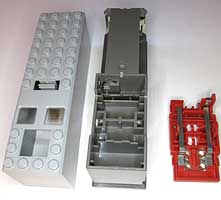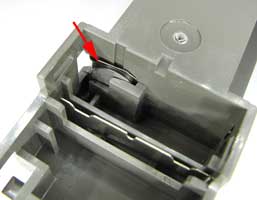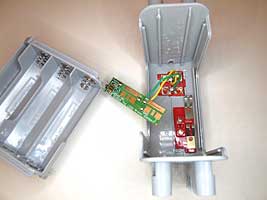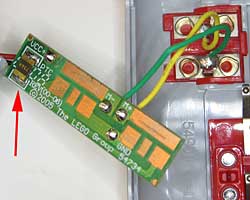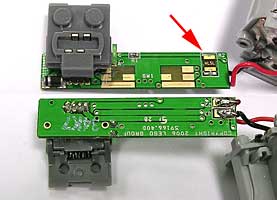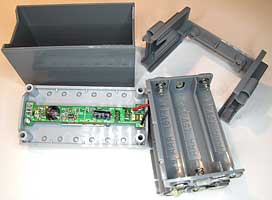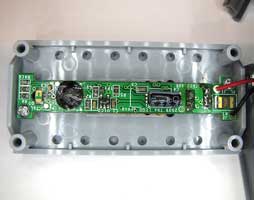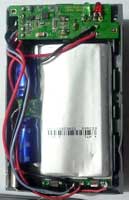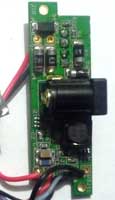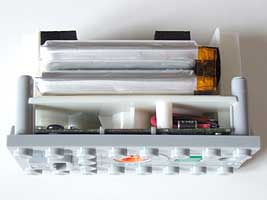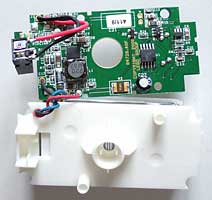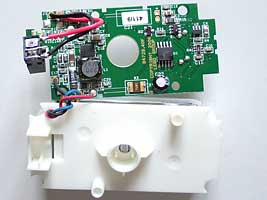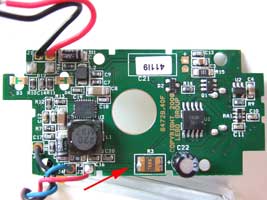![]()
![]()
![]()
![]()

Batteries and Battery packs

While doing tests on V2 Power Functions receiver, I realized the importance of battery pack in LEGO models. Here is a closer look at various battery packs, performances and limitations.
Physical characteristics
|
Description |
Battery
|
Weight (g) |
Bounding
box |
|
Electric
9V Battery |
6 x 1.5V |
199(*) |
136 |
|
Electric
9V Battery |
1 x 9V |
7.93 |
64 |
|
Electric
9V Battery |
6 x 1.5V |
200(*) |
155(**) |
|
Power
Functions |
6 x 1.5V |
201(*) |
155(**) |
|
Power
Functions |
6 x 1.5V |
110 |
80 |
|
Power
Functions |
Li-Po |
76 |
80 |
|
NXT
Rechargeable Battery, |
Li-Po |
109 |
110(***) |
|
NXT
Rechargeable Battery, |
Li-Po |
128 |
110(***) |
(*) Weight with alkaline
cells. Add 22g for NiMH cells.
(**) Volume with fixing tabs,
113 cm³ without.
(***) Partially inside NXT, 39 cm³
outside.
- the old dark bluish grey one that charges with an AC wall adapter, and is rated 7.4V / 1400mAh.
- The newer "NXT white" one that charges with a DC wall adapter, and is rated 7.4V / 2200mAh.
Power Functions rechargeable battery

One problem I met when doing this study is that performance of battery packs mainly depends on... batteries themselves! Since there are wide variations between brands and technologies, it's difficult to get reusable values. So I started with the only "pure" LEGO source, the lithium-polymer Power Functions battery pack. It is rated 7.4V / 1100mAh. The unit I tested is not brand new, but little used.
Discharge characteristics
Using a constant current load, I looked at the behaviour of the battery pack at various discharging currents. This test is done on 9V output (outer wires of PF plug), not on motor output (inner wires) as this one depends on internal motor driver. The maximum current used is 1000mA, above theoretical rated value of internal current limitation of the battery pack (750mA). Actually, rated value of over-current protection (a Bourns MF-MSMF075 resettable fuse) is the guaranteed value - there is some margin.
|
Energy delivered |
Discharge
|
Capacity |
Mid-discharge |
Voltage
|
100mA |
7.93 |
10.8 |
1080 |
7.26 |
8.5 |
250mA |
7.80 |
4.4 |
1091 |
7.07 |
8.6 |
500mA |
7.50 |
2.1 |
1079 |
6.90 |
9.0 |
750mA |
7.34 |
1.5 |
1095 |
6.65 |
9.4 |
1000mA |
6.85 |
1.1 |
1077 |
6.33 |
10.1 |
We see that battery capacity depends little on discharge current, and measured value is very close to the rated value. Since the voltage is lower at high current (because of internal resistance of the battery pack), energy delivered lowers as requested current raises. The table above also lists loaded battery voltage at mid discharge point, and voltage variation that gives an indication of flatness of discharge curve. I defined voltage variation as (V(1/4)-V(3/4))*100/V(1/2)
Here is the chart showing discharge curves at various current. In order to have comparable curves, horizontal axis is graduated as mAh (capacity delivered = discharge current x time). We see that nominal voltage rating (7.4V) is a bit optimistic, except at the start of discharge and at low current.
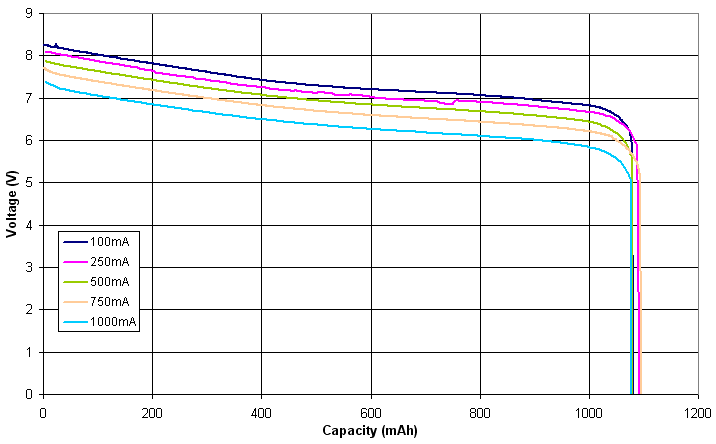
Recharge characteristics
Out of curiosity, I also established charging curve of the battery:

We see that charging current is relatively constant at 500mA, and that the battery recovers most of its energy in less than 2 hours. The full recharge time (battery charging LED stops blinking) takes about 2.2 hours. The total energy injected in battery is 10.3 W.h, so the overall charge/discharge efficiency is about 75% (not counting efficiency of the charger itself).
A close look at the circuitry shows that the charging chip is a switch mode TI BQ24123.
NXT rechargeable batteries
Staying with "pure" LEGO solutions, the next devices tested were the lithium-polymer NXT battery packs. They come in two flavors:
I tested two 1400mAh units (one of them heavily used, the other little used), and one little used 2200mAh unit.
As far as I can tell, these units don't have a current limiting device as they don't need it: they can only be plugged in the NXT brick, and the NXT does have a 1.85A nominal resettable fuse on its power input.
1400mAh NXT battery #1 (used)
|
Energy delivered |
Discharge
|
Capacity |
Mid-discharge |
Voltage
|
250mA |
9.59 |
5.17 |
1301 |
7.36 |
4.3 |
750mA |
8.17 |
1.55 |
1159 |
7.07 |
4.6 |
1400mAh NXT battery #2 (little used)
|
Energy delivered |
Discharge
|
Capacity |
Mid-discharge |
Voltage
|
250mA |
9.47 |
5.24 |
1312 |
7.22 |
4.9 |
750mA |
10.62 |
2.02 |
1505 |
7.11 |
6.2 |
1500mA |
7.34 |
1.5 |
1095 |
7.07 |
4.6 |
2200mAh NXT battery
|
Energy delivered |
Discharge
|
Capacity |
Mid-discharge |
Voltage
|
250mA |
16.22 |
8.98 |
2260 |
7.12 |
9.2 |
750mA |
14.91 |
2.94 |
2200 |
6.85 |
6.9 |
1500mA |
14.2 |
1.47 |
2172 |
6.47 |
9.0 |
We see that the used battery lost a bit of its capacity. The new 2200mAH battery has a steeper discharge curve and a lower average voltage, but it behaves better at high current, keeping it's nominal capacity at 1.5A, whereas its older brother loses some capacity at high current.
Discharge characteristics
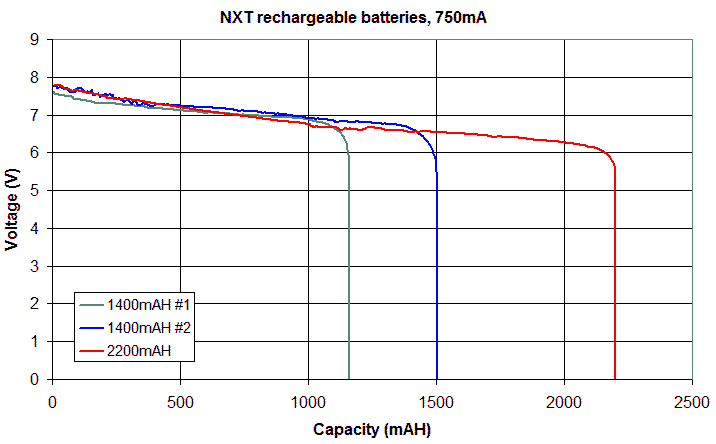
Recharge
I have not performed extensive recharge tests, but the 2200mAH battery has similar charging behaviour as PF battery, about 500mA at 10V. But since the capacity is higher, recharge lasts longer of course.
Battery comparison
Comparing batteries is not an easy task, as there are so many brands, qualities, prices... so the following data must be taken with a grain of salt. I tested several NiMH and alkaline cells. Alkaline batteries were - of course - new, as were AAA NiMH, but NiMH were used ones (and even misused, sometimes over-discharged). Cells were tested in Power Functions battery packs (AA and AAA).
|
Discharge |
Energy delivered |
Discharge
|
Capacity |
Mid-discharge |
Voltage
|
AA - NiMH - 1800mAH |
250mA |
9.41 |
5.5 |
1381 |
6.96 |
6.8 |
750mA |
8.25 |
1.74 |
1315 |
6.47 |
5.9 |
|
Discharge |
Energy delivered |
Discharge
|
Capacity |
Mid-discharge |
Voltage
|
AA - NiMH - 2300mAH - set 1 |
750mA |
9.98 |
1.94 |
1460 |
6.91 |
2.8 |
|
Discharge |
Energy delivered |
Discharge
|
Capacity |
Mid-discharge |
Voltage
|
AA - NiMH - 2300mAH -
set 2 |
250mA |
10.86 |
5.91 |
1483 |
7.44 |
2.5 |
750mA |
10.4 |
2.02 |
1515 |
6.93 |
2.8 |
|
Discharge |
Energy delivered |
Discharge
|
Capacity |
Mid-discharge |
Voltage
|
AA - NiMH - 2500mAH |
250mA |
15.98 |
8.87 |
2216 |
7.28 |
4.2 |
750mA |
15.32 |
3.04 |
2291 |
6.77 |
3.6 |
|
Discharge |
Energy delivered |
Discharge
|
Capacity |
Mid-discharge |
Voltage
|
AAA - NiMH - 850mAH |
750mA |
4.95 |
1.05 |
788 |
6.51 |
8.3 |
|
Discharge |
Energy delivered |
Discharge
|
Capacity |
Mid-discharge |
Voltage
|
AA - Alkaline |
250mA |
12.19 |
6.84 |
1761 |
6.93 |
14.4 |
750mA |
7.94 |
1.76 |
1327 |
5.97 |
16.7 |
|
Discharge |
Energy delivered |
Discharge
|
Capacity |
Mid-discharge |
Voltage
|
AA - Alkaline |
750mA |
9.25 |
2.07 |
1554 |
5.97 |
15.3 |
|
Discharge |
Energy delivered |
Discharge
|
Capacity |
Mid-discharge |
Voltage
|
AAA - Alkaline |
750mA |
2.75 |
0.65 |
493 |
5.58 |
16.4 |
Discharge characteristics
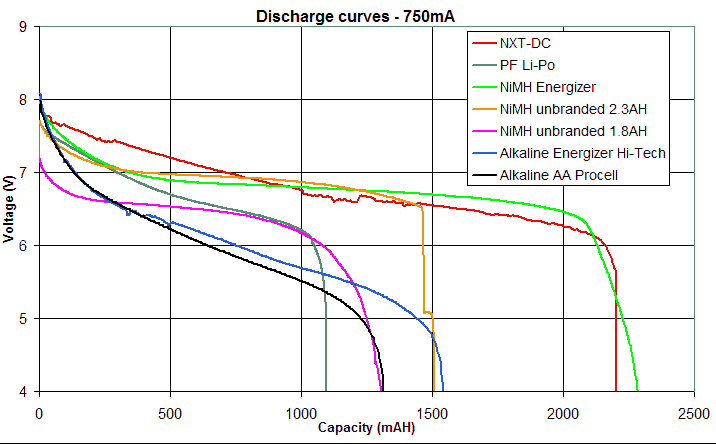
At high current, alkaline battery voltage drops very fast! Their biggest advantage, a higher voltage that allows motors to run faster, only lasts a few minutes. Their capacity is also pretty low compared to high grade rechargeable NiMH cells or the NXT-DC LiPo pack. The PF Li-Po performs pretty well too, taking into account its small size and light weight. Capacity of high grade alkaline cells (Energizer Hi-Tech) is indeed a bit better than regular ones (Duracell Procell) but I paid for them almost 4 times! My (used) unbranded NiMH 2.3AH cells behaves pretty well too, but the end of discharge curve drops abruptly, as if one cell, then another failed suddenly.

At relatively low current (250mA - no load current of two PF L-motors!), alkaline cells fares better, but the voltage advantage doesn't last much longer compared to NXT-DC LiPo pack or even high grade NiMH cells. Note that these continuous tests doesn't allow the batteries to "recover", alkaline batteries would probably give better results with intermittent discharges.

This chart show only AAA size battery pack - here PF Li-Po runs circles around the other battery technologies! OK, I should have made a test at lower current too - someday perhaps...
Summary charts
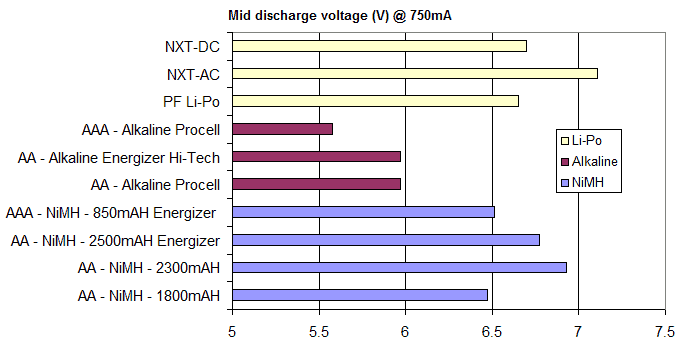
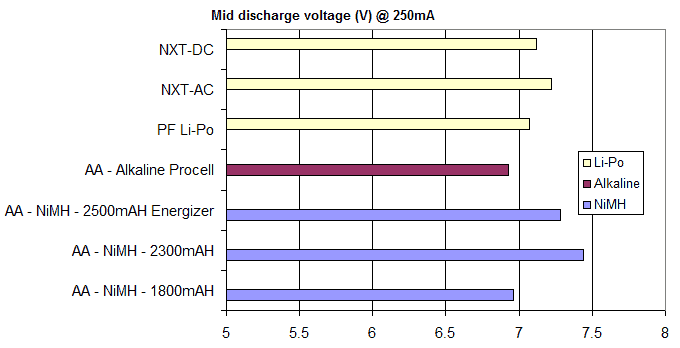
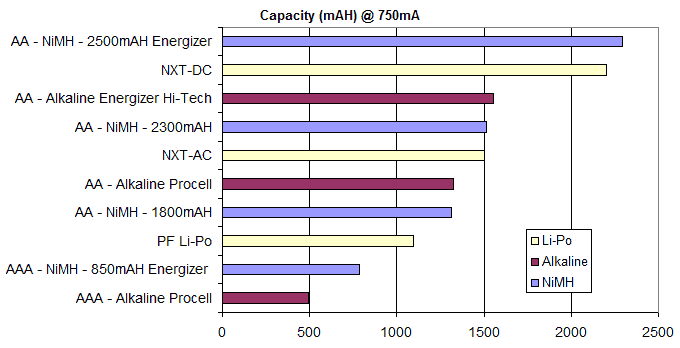
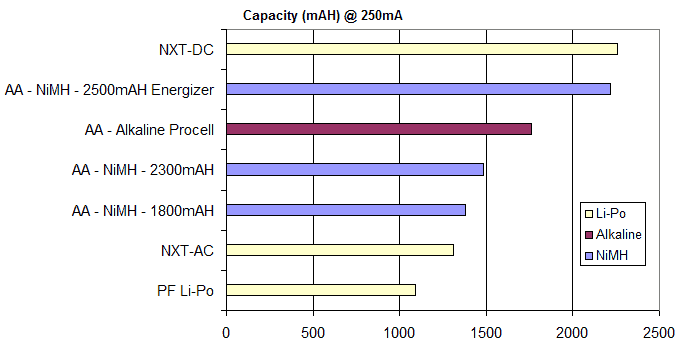
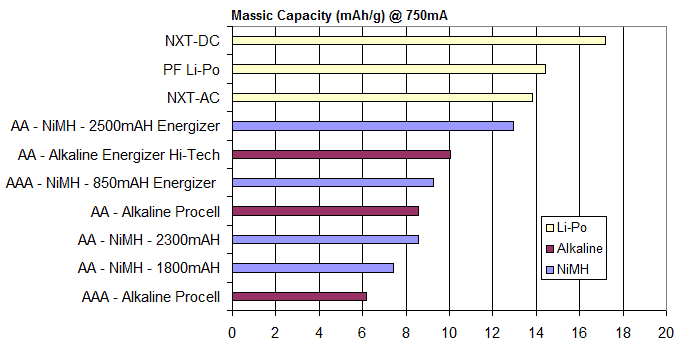
Current limitation
All battery packs (except NXT ones as explained above) have an internal current limitation, using a resettable thermal fuse. These device gets hot when too much current flows through them and their internal resistance, initially low, increase by a large value thus limiting current to a safe value. All PF battery boxes share the same component, (a Bourns MF-MSMF075 resettable fuse). Guaranteed current is 750mA but we can hope a bit more...
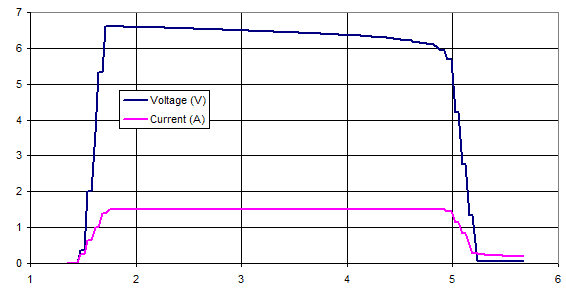
The above chart shows voltage and current delivered by a PF Li-Po battery, providing 1.5A. We see that after 5 seconds, overcurrent protection trips and voltage drops suddenly.
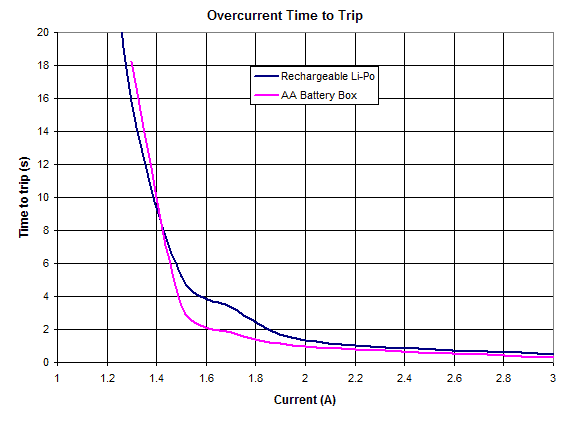
This chart shows protection time to trip versus current, for a PF Li-Po battery and a PF AA battery box. We see that these curves follow closely the theoretical characteristics of MF-MSMF075...
Internal details
Here are some photos showing internal structure of battery packs. The red arrow indicates the current limiting device.
![]()

![]()
![]()
![]()
















